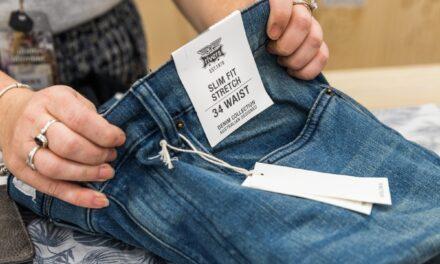Discover the top clothes selling apps in Australia, learn how to increase sales, write compelling descriptions and build a loyal customer base.
The fashion industry has been rapidly evolving in recent years, and the introduction of clothes selling apps has completely changed the game. Clothes selling apps are mobile platforms that allow users to buy and sell clothing items from their smartphones or tablets.
These apps have become increasingly popular in Australia due to their convenience, accessibility, and user-friendly interfaces.
Definition of Clothes Selling Apps
Clothes selling apps are a type of mobile application that allows users to create profiles, list clothing items for sale, and browse through other users’ listings. They can be used by individuals as well as small businesses looking to expand their reach. Some popular clothes selling apps in Australia include Depop, Poshmark, Vinted, and Carousell.
These platforms provide an easy way for people to monetize their wardrobes by selling new or pre-loved clothing items. Buyers can find unique pieces at affordable prices while sellers can earn some extra cash or start a small business with minimal investment.
Importance of Clothes Selling Apps in Australia
Clothes selling apps have had a significant impact on the fashion industry in Australia. With Australians becoming increasingly conscious of sustainability and the environmental impact of fast fashion, these platforms provide an alternative way for people to shop while reducing waste. Furthermore, these platforms have given rise to a new generation of entrepreneurs who can easily start a business from home without having to invest large sums of money upfront on rental spaces or inventory costs.
Purpose of the Article
The purpose of this article is to explore how clothes selling apps are revolutionizing the fashion industry in Australia. We will examine some popular clothes selling apps currently available in Australia and compare their features and services offered. Additionally, we will provide tips for sellers on how best to use these platforms to reach a wider audience and maximize profits.
We will discuss some rarely known small details about the apps, such as how to handle returns and refunds on the platform and how to build a loyal customer base through excellent customer service. By the end of this article, you will have a better understanding of how clothes selling apps work and how they can benefit both buyers and sellers in the fashion industry.
Overview of Clothes Selling Apps in Australia
The fashion industry has witnessed a significant shift over the years. With the rise of e-commerce, people are turning to online platforms to buy and sell clothes.
Clothes selling apps have become increasingly popular in Australia, with many people using them as a way to declutter their closet and make some extra cash. These apps allow individuals to sell their new or gently used clothes without leaving the comfort of their homes.
Popular Clothes Selling Apps in Australia
In Australia, there are several popular clothes selling apps that people can use to sell their items. The most commonly used apps include Depop, eBay, Facebook Marketplace, and Gumtree.
Depop is a social marketplace app that allows users to buy and sell unique fashion items. It has become increasingly popular among young Australians due to its focus on sustainable fashion.
eBay is one of the oldest online marketplaces globally and provides users with an opportunity to sell not only clothing but also other items such as electronics, collectibles, and more. Facebook Marketplace is another platform that Australians use extensively for buying and selling items such as clothing, accessories, furniture, etc., through its integrated app feature within the Facebook website/mobile app itself or via separate Messenger conversations for negotiating prices between buyers/sellers privately.
Gumtree is an online classifieds platform where individuals can post ads for free about various products including clothing. While it may not be purely dedicated to fashion like Depop or eBay’s dedicated Clothing section catalogues under Men’s/Women’s Wear sections respectively but it still offers entrepreneurs/individuals the option of offering different deals tailored around various categories from second-hand designer wear through vintage collections perfect styling oriented outfits.
Comparison of Features & Services Offered by Each App
Each clothes selling app provides different features that cater differently towards user needs; some offer opportunities for social interaction while others focus on secure payment systems. Depop offers a strong sense of community with its social media-like features that allow users to follow each other, like posts, and leave comments on listings.
eBay offers extensive purchase protection services, making it one of the safest platforms for buyers and sellers alike. Facebook Marketplace allows users to connect with potential buyers/sellers in their local area, promoting quick transactions without shipping hassles.
Gumtree might not offer features similar to Depop or eBay but provides an all-rounded classifieds platform where individuals can browse through different categories like Home & Garden plus Cars/Bikes while browsing attire for all ages from newborns to adults such as Men’s / Women’s Clothing. It also has a feature allowing for browsing Ads by proximity (within specified distances i.e., 5 km, 10 km) based on postcode entries.
Advantages and Disadvantages of Using Clothes Selling Apps
The advantages of using clothes selling apps include convenience and accessibility. With these apps, sellers can list items at any time from anywhere using their smartphone or computer/laptop devices.
Buyers can easily find what they are looking for through product categories and keyword searches. The primary disadvantage is the competition that arises because there are several people selling similar items.
This may mean that products are undervalued or overpriced due to the vast amount of supply/demand ratios which may cause a potential buyer/seller to concede more than usual under market prices just so they’re not stuck with unsold inventory at home when demand tapers off in lower seasons where fewer people shop around online platforms frequently. Clothes selling apps have revolutionized the way people buy and sell clothing in Australia, providing unparalleled convenience and accessibility for both buyers and sellers alike!
How to sell clothes on different platforms
Selling clothes online has become a popular way to make some extra cash, but with so many options available, it can be difficult to know where to start. Some popular platforms for selling clothes include eBay, Etsy, and Depop. Each platform has its own unique features and audience, so it’s important to choose the right one for your needs.
EBay is a great option for selling new or used items in bulk or individually. It has a large user base and offers various tools like promoted listings and seller discounts that can help boost sales.
Etsy is perfect for handmade or vintage items, including clothing and accessories with a unique flare. Depop is an app-based platform designed specifically for fashion resale targeting Gen Z audience.
Tips for taking high-quality photos for your listings
The quality of your photos plays a crucial role in attracting buyers. Here are some tips on how to take high-quality photos that showcase your clothing in the best light:
– Use natural lighting: Avoid using flash photography as it can distort the colors of your clothing. – Choose a simple background: A plain white or light-colored background works well as they don’t distract from the item being sold.
– Show different angles: Take photos from different angles showing the front, back and close-ups of any details. – Use props effectively: Adding props like jewelry or shoes can give potential buyers an idea of how they can style the item.
Best practices for writing descriptions that attract buyers
Writing compelling descriptions is key to getting potential buyers interested in your items. Here are some tips on writing effective descriptions:
– Be detailed but concise: Describe the item accurately but keep it brief. – Highlight key features: Mention any special features like fabric type, size or color
– Be honest about any flaws: Disclose any imperfections upfront so there are no surprises for the buyer. – Use keywords: Make sure to include relevant keywords that buyers may be searching for.
Strategies for pricing your items competitively
Pricing is a critical factor in determining if an item will sell. Here are some strategies for pricing your items competitively: – Research similar listings: Check out what others are selling similar items for and price your item accordingly.
– Consider the condition: If the item is brand new, you can price it higher. However, if it’s used or has any flaws, you may need to price it lower.
– Factor in shipping costs and fees: Make sure to account for shipping costs and any platform fees when pricing the item. – Be open to negotiation: Leave some wiggle room in your pricing to allow buyers to negotiate a price that works best for both parties.
Rarely Known Small Details
How to negotiate with potential buyers effectively
Negotiating with potential buyers can be a daunting task, but it’s an essential skill to have when selling clothes online. To start, it’s important to be polite and courteous throughout the negotiation process.
Refrain from being pushy or aggressive in your approach as this may put off the buyer. One effective strategy is to offer incentives such as bundling items together for a discounted price or offering free shipping.
This not only sweetens the deal for the buyer but also shows that you are willing to negotiate and are flexible with pricing. It’s also helpful to research similar listings on the platform and see how they are priced.
This can give you an idea of what price point is reasonable for your item. Remember, it’s better to sell an item at a slightly lower price than not at all.
How to handle returns and refunds on the platform
Returns and refunds are inevitable when selling clothes online, so it’s important to have a clear policy in place. Many platforms have their own policies regarding returns and refunds, so make sure you understand them before listing your items.
One strategy is to include detailed descriptions of your items along with high-quality photos to minimize the likelihood of returns due to misrepresentation. If a return is requested, respond promptly and professionally with instructions on how to return the item.
When issuing refunds, make sure you follow the platform’s guidelines for doing so. This may involve providing evidence of shipment or proof that the item was returned in its original condition.
How to build a loyal customer base through excellent customer service
Building a loyal customer base requires excellent customer service skills. Start by responding promptly and courteously to inquiries from potential buyers.
Follow up after sales by thanking customers for their purchase and asking for feedback on their experience. Offer incentives for repeat customers such as discounts or exclusive access to new items before they are listed publicly.
This not only encourages repeat business but also promotes word-of-mouth marketing. It’s important to be transparent and honest in your dealings with customers.
If there is a delay in shipping or an issue with the item, communicate this openly and offer solutions to make it right. This builds trust and credibility with your customers, which is essential for building a loyal customer base.
Selling clothes on apps in Australia can be a lucrative business if done right. It’s important to research different platforms thoroughly to find the one that best suits your needs and offers the features you require. When listing items, take the time to create detailed descriptions and high-quality photos that accurately represent your items.
Consider offering incentives such as bundling items together or free shipping to make your listings more attractive to potential buyers. Handling returns and refunds professionally is crucial for maintaining a positive reputation on the platform and building trust with buyers.
Excellent customer service skills are essential for building a loyal customer base that will return time after time. By following these tips and strategies, you can set yourself up for success when selling clothes on apps in Australia.
Conclusion
Now that we have discussed the importance of clothes selling apps in Australia and provided an overview of popular platforms, it is clear that these apps offer numerous benefits to both buyers and sellers. They provide a convenient way for people to shop and sell goods without leaving their homes, offer competitive pricing options, and allow users to find unique items.
In terms of selling clothing on these apps, it is important to take high-quality photos, write effective descriptions, price competitively, negotiate effectively with potential buyers, handle returns professionally and build a loyal customer base. These tips can help ensure success on the platform.
Looking at the future of clothes selling apps in Australia, there is no doubt that they will continue to grow in popularity as more people become comfortable with online shopping. With advancements in technology such as augmented reality and virtual try-on features being integrated into some platforms already, we can expect even more exciting developments in the near future.
Despite concerns around privacy issues and scams on these platforms, it is encouraging to see that many companies are taking proactive steps to combat these problems. For example, many have implemented verification processes for sellers or added measures for secure payments.
Overall, clothes selling apps have revolutionized the way we buy and sell clothing online. With their user-friendly interfaces and wide range of features offered by each platform discussed above; it’s clear that they will continue shaping our relationship with fashion for years to come.












